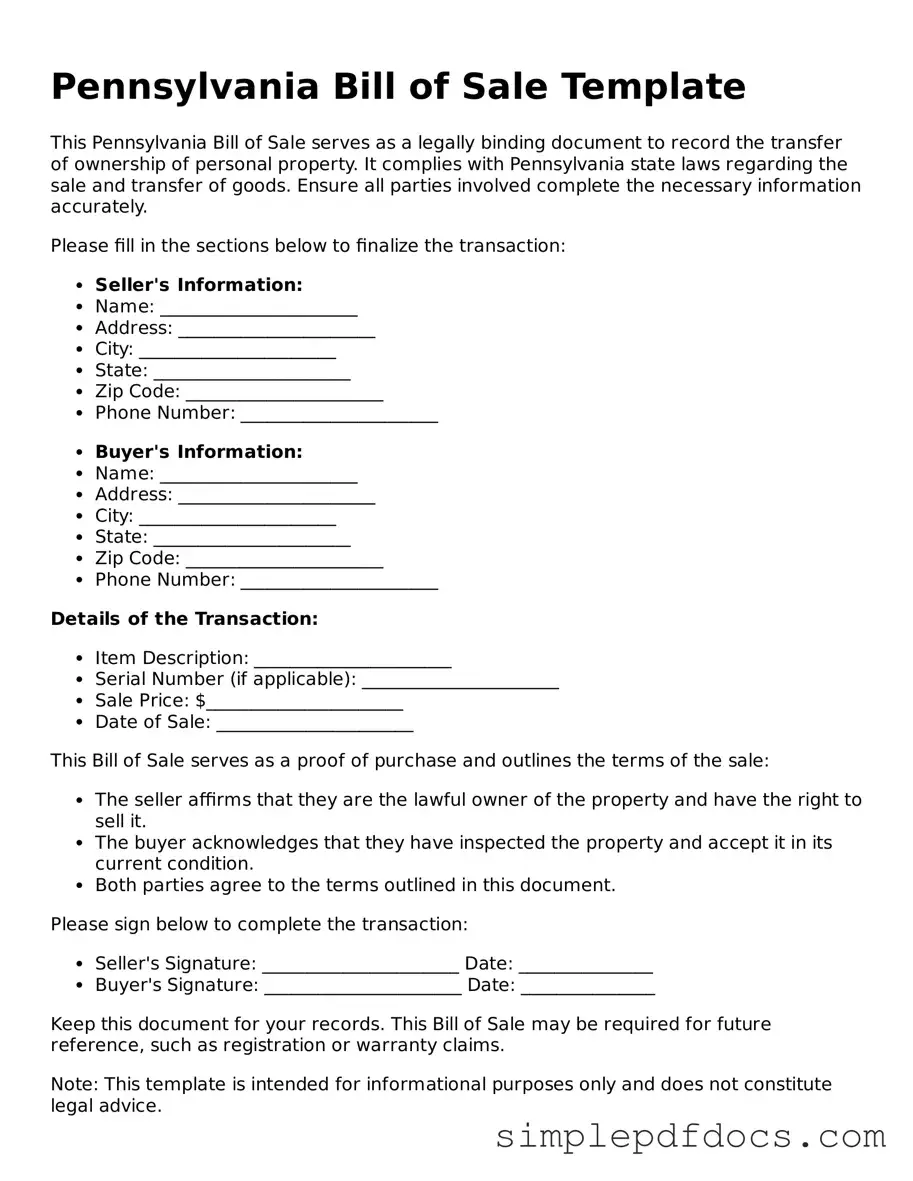In the realm of personal property transactions, the Pennsylvania Bill of Sale form serves as a vital document that facilitates the transfer of ownership between parties. This form is particularly significant in instances involving vehicles, boats, and other valuable items, as it provides a legal record of the exchange. Essential components of the form include the names and addresses of both the seller and buyer, a detailed description of the item being sold, and the sale price. Additionally, it often requires the inclusion of the date of the transaction, ensuring that all parties have a clear understanding of when the transfer occurred. By utilizing this form, individuals not only protect their rights but also establish a transparent and enforceable agreement. Furthermore, the Bill of Sale can serve as proof of ownership, which may be crucial for future dealings or disputes. Understanding the nuances of this form can greatly enhance the security and clarity of personal property transactions in Pennsylvania.
